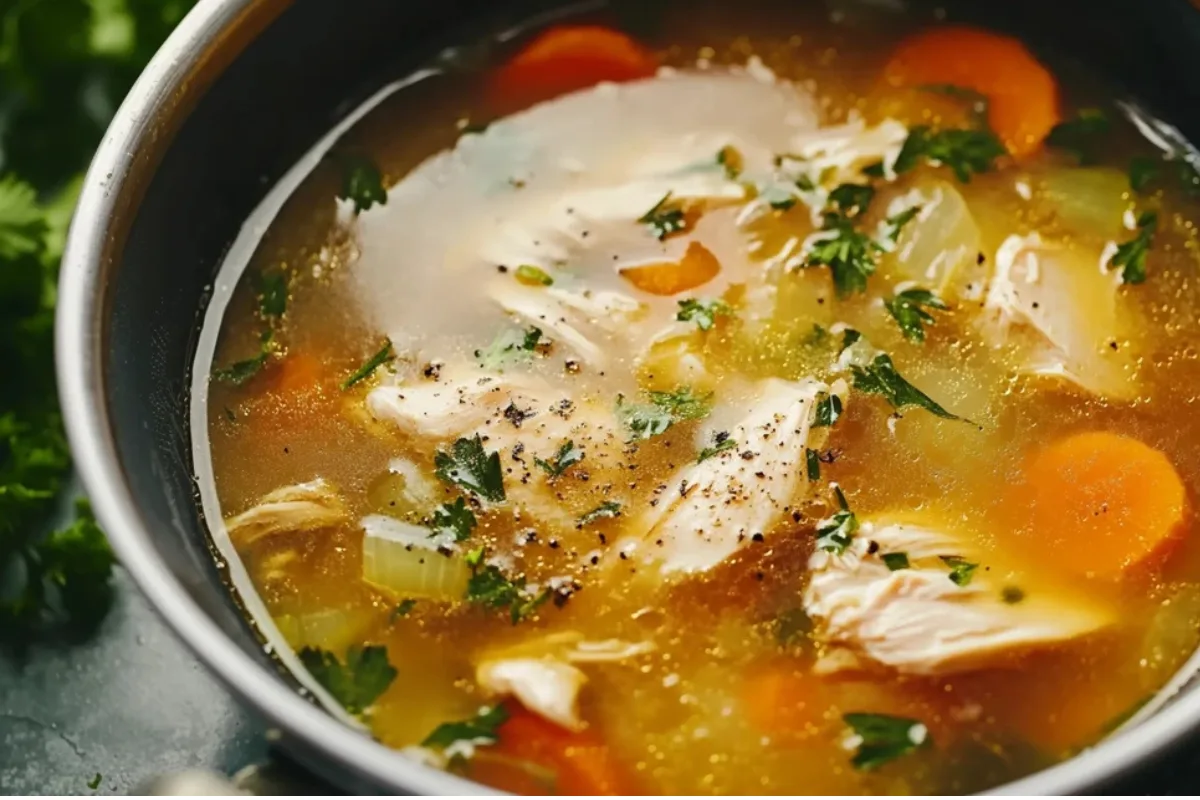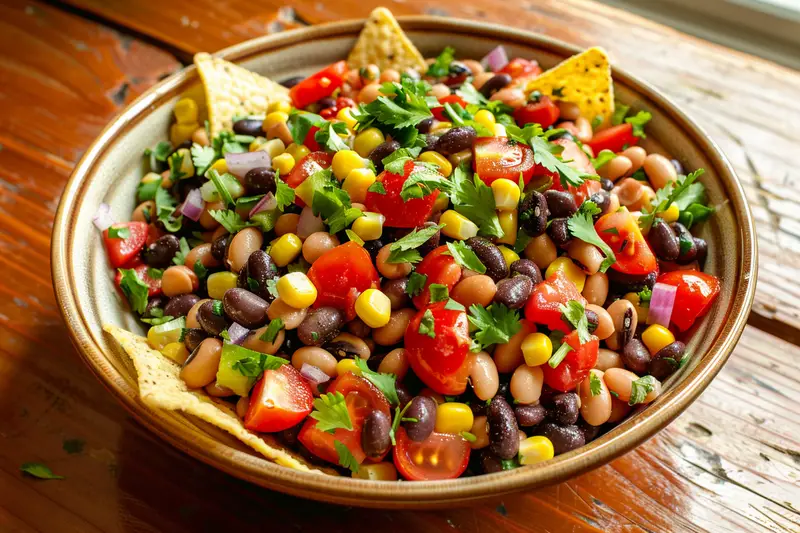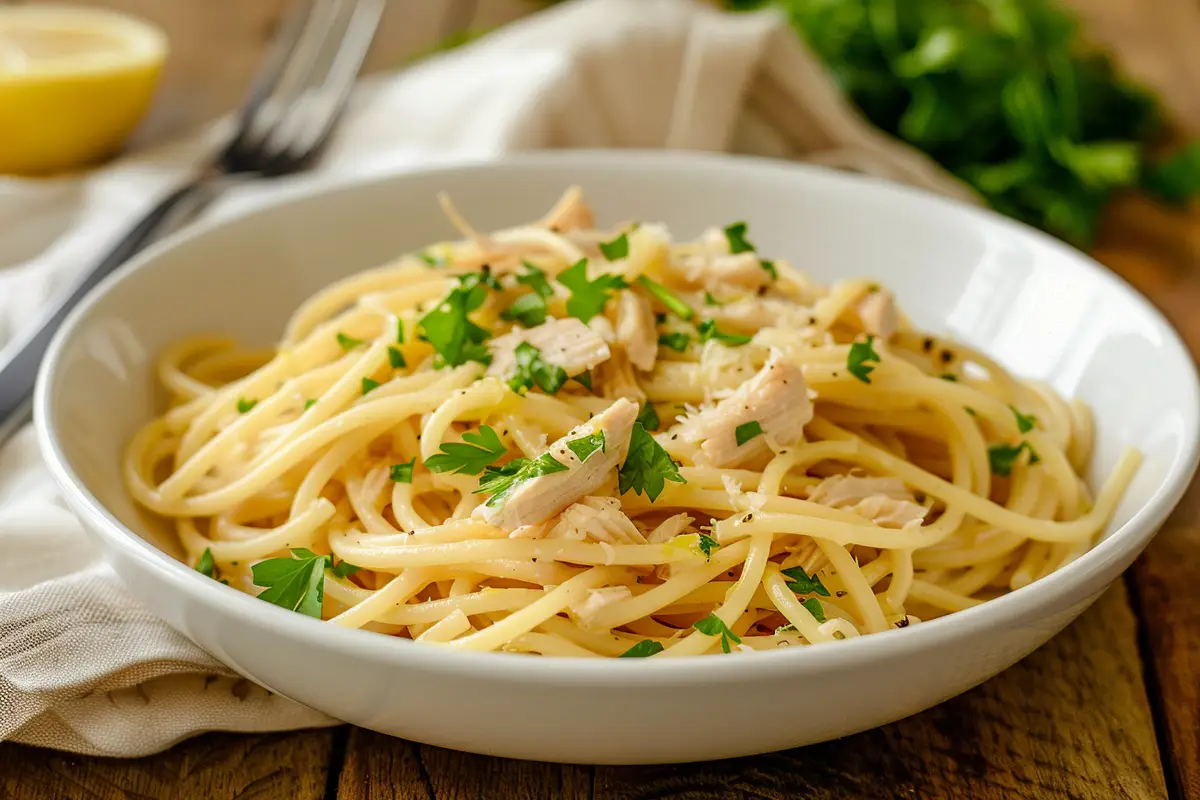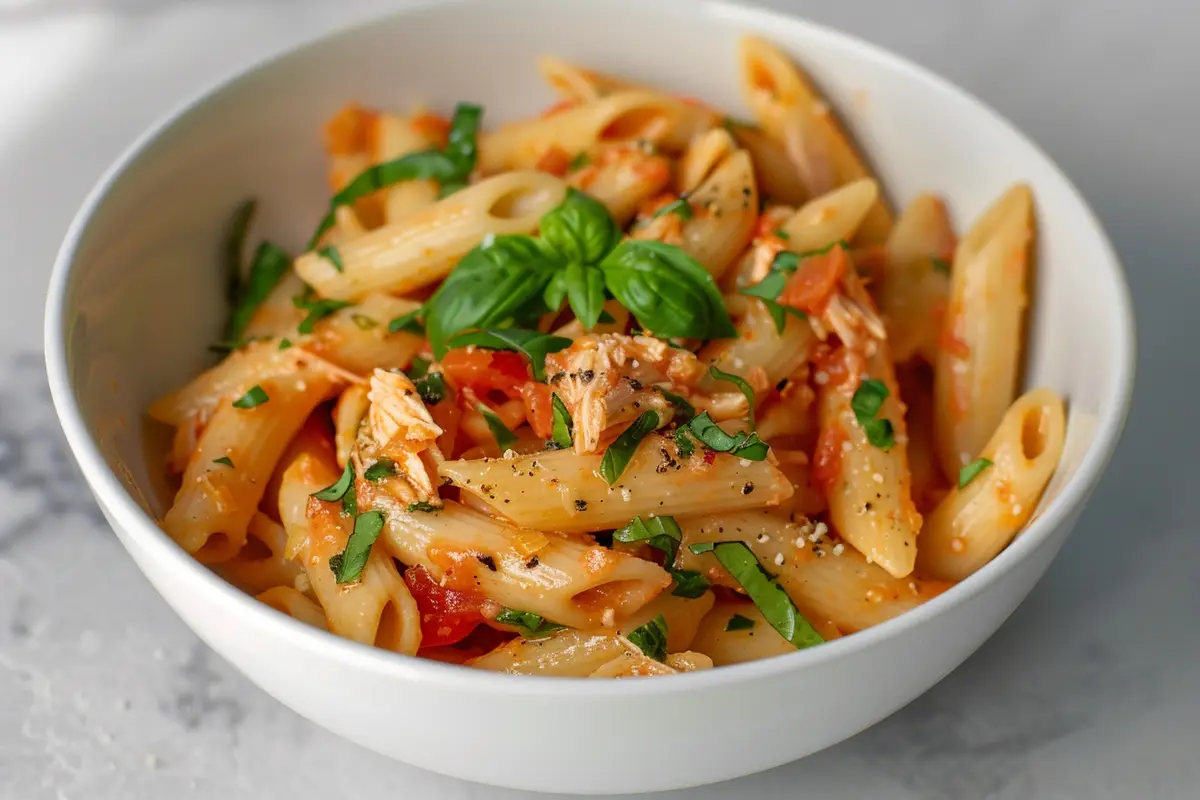Chicken bouillon cubes and powder are staples in kitchens worldwide. They can add rich, savory depth to a variety of dishes, making them a favorite choice for both home cooks and professional chefs. Whether you’re preparing soups, stews, or rice dishes, chicken bouillon delivers flavor easily and affordably. This article explains everything you need to know, including what chicken Broth is, its benefits, and how to use it creatively in your cooking.
Table of contents
What is Chicken Broth?
Chicken Broth is a concentrated broth that comes in cube or powder form. It’s made by combining chicken flavor with spices, salt, and ingredients like hydrolyzed cornstarch. This blend creates a flavor similar to homemade chicken stock, making it a convenient choice for quick meals.
How Does Chicken Bouillon Work?
Chicken bouillon provides a fast way to add flavor without spending hours preparing fresh broth. For example, you can dissolve a cube in hot water to create a base for soups or stews. Additionally, it works well in marinades, gravies, and sauces.
Why is it So Popular?
- Convenience: Chicken bouillon is easy to store and use whenever needed.
- Affordability: It costs far less than fresh or prepackaged broth.
- Versatility: You can use it in many dishes, from soups to roasted vegetables.
Nutritional Values of Chicken Bouillon
Understanding the nutrition of chicken broth helps you use it wisely in your meals. While it’s flavorful and convenient, it can also be high in sodium.
| Nutrient | Amount per Serving | Details |
|---|---|---|
| Calories | 10-15 kcal | Adds flavor without many calories. |
| Sodium | 800-1000 mg | Can be high; consider using low-sodium options. |
| Chicken Fat | 1-2 g | Adds richness and enhances taste. |
| Additives | – | May include MSG, TBHQ, or disodium inosinate. |
Things to Consider
Because of its high sodium content, chicken bouillon should be used sparingly, especially if you’re watching your salt intake. Moreover, additives like monosodium glutamate (MSG) can cause sensitivity in some individuals.
Learn more ways to use leftover chicken in these creative Leftover rotisserie chicken recipes.
Benefits of Using Chicken Bouillon in Cooking
Chicken bouillon offers many advantages, especially for busy cooks. It’s a quick and easy way to add delicious flavor without complicated preparation.
1. Boosts Flavor
Chicken bouillon enhances the taste of dishes with just a small amount. For example, adding bouillon to soup creates a rich, savory base. Additionally, it pairs well with spices like thyme, parsley, or onion powder.
2. Saves Time
Instead of spending hours simmering stock, you can dissolve bouillon in minutes. This is particularly helpful when you’re short on time or need to make a quick meal.
3. Cost-Effective
Compared to fresh broth, chicken bouillon is a budget-friendly option. A small package can last for weeks and be used in multiple dishes, saving both time and money.
Pro Tip: For creamy dishes, mix chicken bouillon with coconut milk to create a flavorful sauce.
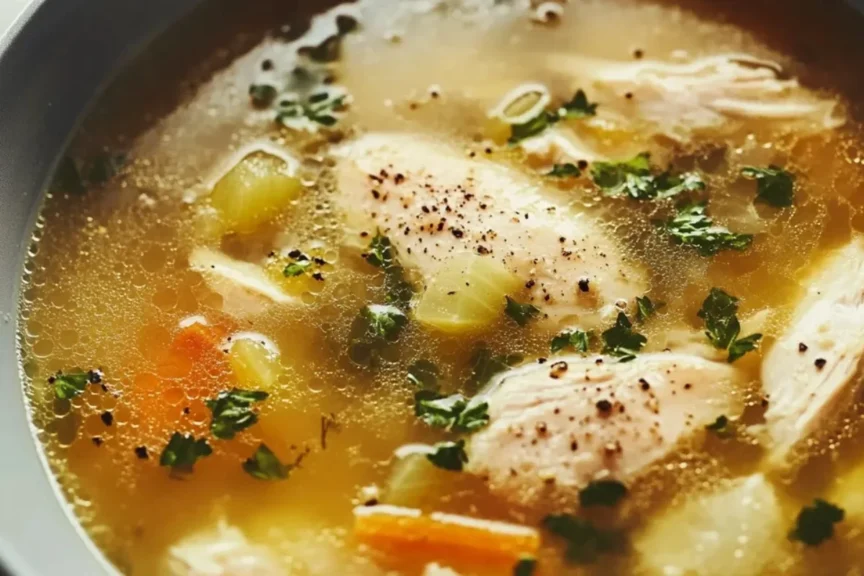
Creative Ways to Use Chicken Bouillon
Chicken bouillon is versatile and can be used in countless recipes beyond soups and stews.
1. Elevate Rice and Grains
Cooking rice or quinoa in bouillon water makes them more flavorful. Add a pinch of turmeric for color and paprika for a smoky edge. This simple change can turn plain rice into a standout side dish.
- Actionable Tip: Dissolve 1 cube of chicken Broth in 2 cups of boiling water before adding your rice.
- Example: Add vegetables and parsley for a quick pilaf.
2. Enhance Vegetables
Steaming or roasting vegetables with bouillon makes them taste richer. For instance, carrots glazed with a bouillon-based sauce caramelize beautifully in the oven.
- Actionable Tip: Use dissolved bouillon as a marinade for roasting vegetables.
- Example: Try it with broccoli, cauliflower, or green beans for a burst of flavor.
How to Use Chicken Bouillon Properly
Using chicken bouillon correctly ensures you get the best results in your cooking.
Step-by-Step Instructions
- Dissolving: Add 1 cube or 1 teaspoon of bouillon powder to 2 cups of boiling water. Stir until fully dissolved.
- Measuring for Recipes: Use one cube for every cup of broth your recipe requires. Adjust to taste if needed.
- Incorporating: Add bouillon early in the cooking process so the flavors have time to blend.
Other Uses
Chicken bouillon isn’t just for soups. You can sprinkle it on popcorn for a unique snack or mix it into ground meat for burgers and meatballs.
Find tips for making rich soups with this comprehensive guide to soup bones.
Is Chicken Bouillon a Healthy Choice?
Chicken bouillon is flavorful and convenient, but is it a healthy option? Here are the pros and cons to help you decide.
Advantages
- Low-Calorie: Chicken Broth adds flavor without adding many calories.
- Gluten-Free Options: Many brands now offer gluten-free varieties for those with dietary restrictions.
Disadvantages
- High Sodium: The high salt content can pose risks, especially for those with hypertension.
- Additives: Ingredients like MSG or TBHQ may not align with everyone’s dietary preferences.
For a healthier alternative, consider making your own bouillon. Combine dehydrated chicken, herbs, and spices for a flavorful yet additive-free option.
Popular Recipes Featuring Chicken Bouillon
Chicken bouillon plays a significant role in countless recipes, offering a quick and effective way to enhance flavors. Its versatility makes it ideal for everything from hearty soups to creamy casseroles.
1. Spicy Chicken Soup
Spicy chicken soup, a comforting and flavorful dish, benefits greatly from the depth that chicken Broth provides. It combines bold spices and rich ingredients to create a meal that’s both satisfying and easy to prepare.
- Ingredients: Chicken bouillon, shredded chicken, chili powder, garlic, onion, and fresh vegetables.
- Preparation Tip: Start by dissolving a bouillon cube in 2 cups of boiling water. This step ensures that the soup has a robust base that supports the bold spices.
- Serving Suggestion: Garnish with chopped cilantro, diced avocado, and lime wedges for a fresh, tangy twist.
Additionally, chicken bouillon can simplify the cooking process while ensuring a consistent flavor profile.
Internal Link 1: Discover how chicken Broth enhances soup recipes in this Mexican soup guide.
2. Cheesy Garlic Chicken Wraps
Cheesy garlic chicken wraps are another delicious example of how chicken bouillon can transform a dish. By adding bouillon to the filling, you create a savory and well-rounded flavor that pairs perfectly with melted cheese and tender chicken.
- Quick Tip: Dissolve bouillon in warm water before mixing it into the shredded chicken. This ensures the flavors penetrate the meat evenly.
- Recipe Variation: For an extra layer of flavor, add roasted red peppers or sautéed mushrooms to the filling.
Moreover, these wraps make an excellent meal option for busy days, as they are quick to assemble and require minimal cleanup.
Homemade Chicken Bouillon Alternatives
While store-bought chicken Broth is convenient, making your own is a healthier and more customizable alternative. Homemade bouillon allows you to control sodium levels, avoid additives, and tailor the flavor to your preferences.
How to Make Homemade Bouillon
Making homemade bouillon is surprisingly simple and requires just a few ingredients.
- Ingredients: Dehydrated chicken, celery, garlic, onion, parsley, thyme, and a pinch of salt.
- Instructions:
- Begin by dehydrating the chicken and vegetables ihttps://elyserecipes.com/best-fish-fry-seasoningn an oven or food dehydrator.
- Once dried, blend the ingredients into a fine powder.
- Mix in your chosen herbs and seasonings.
- Store the bouillon powder in an airtight container. Use one teaspoon per cup of water for a flavorful broth.
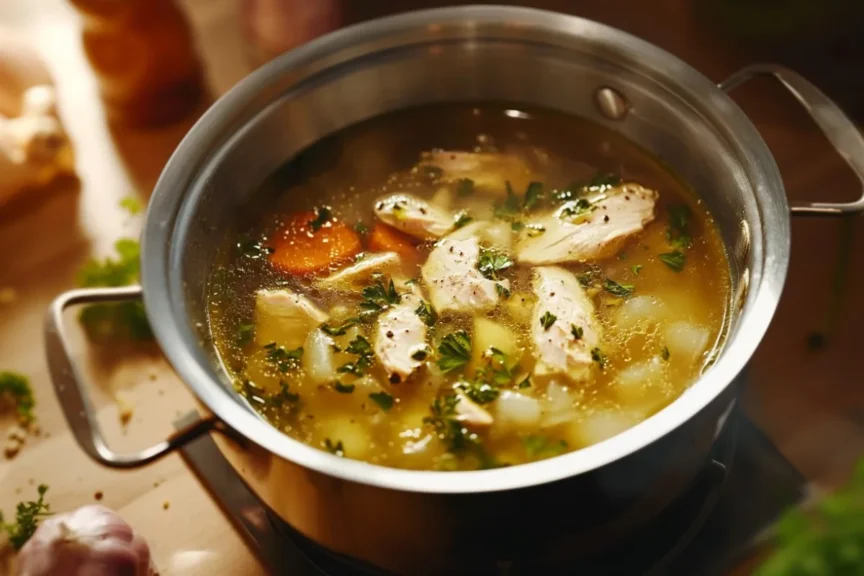
Advantages of Homemade Bouillon
- Customizable Flavors: Adjust the seasoning and herbs to match your taste preferences.
- No Additives: By making it yourself, you eliminate artificial ingredients commonly found in commercial products.
- Cost-Effective: Using leftover chicken and vegetables minimizes waste while creating a valuable pantry item.
Common Misconceptions About Chicken Bouillon
Despite its popularity, there are several myths and misconceptions about chicken bouillon. Clearing up these misunderstandings helps you make better use of this versatile ingredient.
Does Chicken Bouillon Contain Real Chicken?
Yes, most brands include chicken fat or extract, although the amount can vary. Some vegetarian versions replicate the flavor using plant-based ingredients, making them suitable for a variety of diets.
Is Chicken Bouillon Gluten-Free?
Although many bouillon products are labeled as gluten-free, some may contain traces of gluten due to manufacturing processes. Always check the packaging if you have dietary restrictions.
Is Bouillon Always High in Sodium?
Traditional bouillon is indeed high in sodium. However, many brands now offer low-sodium options, providing a healthier alternative for those watching their salt intake.
Explore creative ways to cook with rotisserie chicken in this How to Cook Already Cooked Rotisserie Chicken Perfectly at Home.
FAQs About Chicken Bouillon
Here are answers to common questions about chicken bouillon, ensuring you get the most out of this ingredient.
What is the main use of chicken bouillon?
Chicken bouillon is primarily used as a base for soups, stews, and sauces. It also enhances the flavor of grains, vegetables, and marinades.
What meats pair well with chicken bouillon?
Chicken, turkey, and pork are excellent choices. Additionally, bouillon complements beef in casseroles and lamb in stews.
What are the benefits of using chicken bouillon?
Chicken bouillon adds rich flavor without requiring extensive preparation. It’s convenient, affordable, and available in low-sodium varieties for those seeking healthier options.
Can you use chicken bouillon by itself?
Yes! Dissolving bouillon in hot water creates a flavorful broth that can be enjoyed on its own or used as a base for other dishes.
Is chicken bouillon better than homemade broth?
Homemade broth is generally healthier and free of additives, but chicken bouillon provides a quicker alternative with consistent results.
Pro Tips & Variations
Chicken bouillon offers endless possibilities for culinary creativity. These tips and variations can help you use it more effectively.
Pro Tips
- Control the Salt: Always start with a small amount of bouillon and adjust to taste to avoid oversalting your dish.
- Blend with Fresh Herbs: Adding fresh thyme, parsley, or cilantro enhances the flavor and adds a vibrant touch.
Creative Variations
- Fusion Dishes: Use chicken bouillon in Asian-inspired dishes like ramen or stir-fry to create an umami-rich base.
- Savory Snacks: Sprinkle powdered bouillon on popcorn or roasted nuts for a unique, savory twist.
- Baking: Incorporate bouillon into bread dough or biscuits for unexpected depth and flavor.
Conclusion
Chicken bouillon cubes and powders are versatile ingredients that can elevate a wide variety of dishes. Whether you use store-bought bouillon for convenience or create your own for a healthier alternative, this ingredient is a staple that no kitchen should be without. By understanding its uses, benefits, and creative applications, you can enhance your meals with minimal effort and maximum flavor.
Want to see more? If you enjoyed this article, we invite you to join us on our Facebook page ElyseRecipes. That way, you’ll be among the first to hear about our updates, cooking tips, and recipe ideas! Come share your passion and connect with our community.
Print
Chicken Bouillon Cubes and Powder: Flavorful Cooking Essentials
Description
Chicken bouillon is a concentrated seasoning that adds rich, savory depth to various dishes. Available in cubes, powder, or paste, it’s made by dehydrating chicken stock and combining it with salt, fat, and seasonings like garlic and onion powder. When dissolved in hot water, it creates a flavorful broth ideal for soups, stews, sauces, and more.
Types of Chicken Bouillon:
Cubes: Compressed blocks that dissolve in hot water, offering convenience and long shelf life.
Powder: Granulated form that dissolves quickly, allowing for precise portion control and easy incorporation into recipes.
Paste: A gel-like concentrate known for its rich flavor, often requiring refrigeration after opening.
Uses in Cooking:
Soups and Stews: Dissolve in water to create a savory base for various soups and stews.
Rice and Grains: Cook rice, quinoa, or couscous in bouillon-infused water to enhance flavor.
Sauces and Gravies: Incorporate into sauces and gravies for added depth and umami.
Marinades: Use as a base for marinating meats and vegetables to infuse them with savory notes.
Health Considerations:
While chicken bouillon is low in calories, it often contains high levels of sodium and may include additives like MSG. For a healthier option, consider low-sodium or organic varieties, or make homemade bouillon to control ingredients and salt content.
Ingredients
-
1 tablespoon salt (adjust to taste)
-
1 teaspoon dried thyme
-
1 teaspoon garlic powder
2 cups chicken stock
Instructions
Simmer the chicken stock until it reduces by half.
Add salt, thyme, and garlic powder; stir to combine.
Pour the mixture into an ice cube tray and freeze.
Use one frozen cube as a substitute for one store-bought bouillon cube.
Notes
This homemade version allows you to control the ingredients, ensuring a healthier and customizable alternative to store-bought options.

